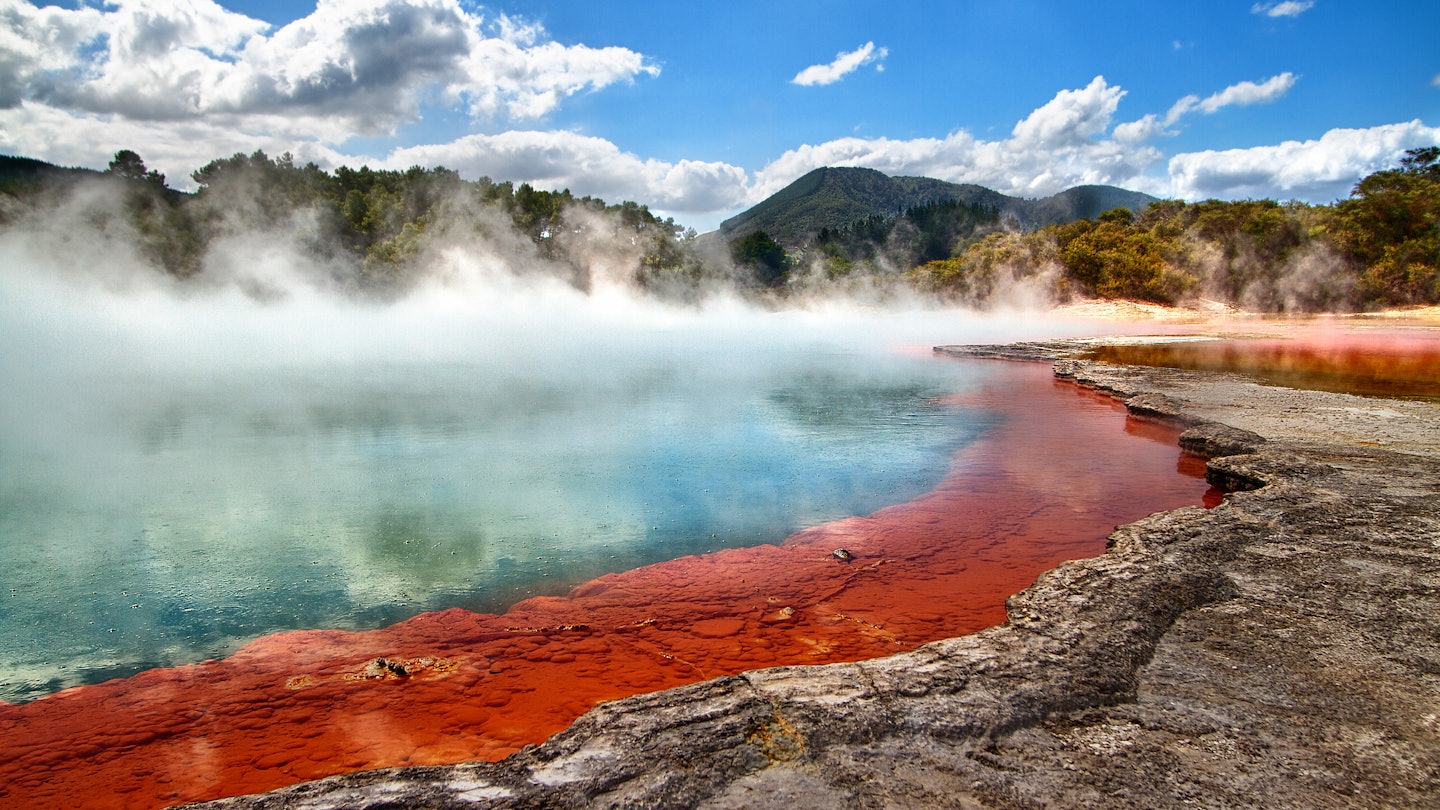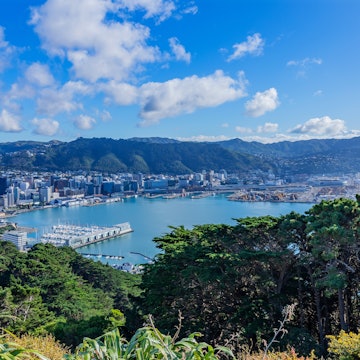

Steam coming off of a geothermal pool in New Zealand. Christopher Chan / Getty Images
Most visitors to New Zealand schedule their trip during the nation’s balmy summer months, but wintertime heralds a whole new set of attractions across both islands, from world-class skiing to bubbling hot springs, next-level wildlife watching to quirky winter festivals. With fewer crowds and prices for rental cars and accommodation typically slashed, it’s a wonderful time to rug up and explore this incredible winter wonderland.
Soaking in hot springs
Chilly winter days are perfect for relaxing in New Zealand’s geothermal pools, most of which are found on the volcanic North Island. Rotorua is particularly famous for its hot springs, both natural – such as Kerosene Creek, which even has a warm waterfall – and manmade, with just about every accommodation offering private spa pools fed by a natural spring. With several hot spring complexes to choose from, Lake Taupo is also a popular destination for a soak, while down on the South Island, the European-esque Hamner Springs spa complex north of Christchurch is one of the region’s top attractions.

Stargazing
New Zealand’s starscapes are at their most spectacular during the long, clear mid-winter nights, particularly those above the Aoraki (Mt Cook) region on the South Island (where star tours can be arranged). Light pollution is strictly controlled in this official International Dark Sky Reserve (the largest of its kind in the world), where stargazers can spot constellations that can only be seen in the Southern Hemisphere such as the Southern Cross, the Magellanic Clouds and the Milky Way. Towards the end of May, look out for the cluster of tiny stars that rise on New Zealand’s northeast horizon known as the Pleiades star cluster or Matariki, a celestial reminder of the most important event on the Māori cultural calendar: Māori New Year. If you’re travelling in the southern half of New Zealand during winter, keep your eyes peeled for the Aurora Australis (Southern Lights), too.

Whale watching
When it comes to whale watching in New Zealand, it doesn’t get much better than Kaikoura on the northwest coast of the South island, which is one of the only places in the world where it’s quite common to spot the elusive sperm whale. The winter months also bring an assortment of other whales including humpbacks, pilot whales, blue whales and southern right whales, as well as fur seals, dolphins, and even albatross. Troy Channel in Marlborough Sounds is another hot spot on the South Island, while whale-watching activities on the North Island are centered in the Hauraki Gulf near Auckland, the Bay of Plenty, and the Bay of Islands.
Wine tasting
The vines might be bare during the winter months, but most of New Zealand’s winery cellar doors are open year round. By visiting during the quieter winter months, the wine-tasting experience can feel much more intimate, not to mention cosy, with many wineries equipped with roaring fires and blankets for guests. On the South Island, the wineries of Central Otago – famed for its pinot noir – are easily accessible from the winter sports hubs of Queenstown, while Wanaka, the gateway to Treble Cone ski resort, has two cellar doors within walking distance of the centre, Rippon and the Maude Wines tasting room (76A Golf Course Rd). On the North Island, a whale-watching excursion to the Bay of Plenty could be combined with a visit to some of the region’s handful of wineries such as Mills Reef Winery, known for its Bordeaux-style reds.

Skiing and snowboarding
Generally running from mid-June to early October, New Zealand’s ski season might be a little shorter than that of Northern Hemisphere resorts, but the skiing and snowboarding here can be just as good as anywhere in Europe or North America. Most winter sports enthusiasts head to the four main winter resorts surrounding Queenstown on the South Island (check out our guide to planning a Queenstown ski trip), though there are more than 25 ski areas spread across both islands to choose from – many of which also offer alternative winter activities such as snowshoeing, glacier walking and snowmobiling. Plan a trip after the mid-July school holidays to dodge the crowds and enjoy the best chances of dry powder.
Catching a winter festival
Officially celebrated on 15 June, Māori New Year celebrations are arguably best observed in larger cities, with most – particularly Auckland – hosting events ranging from Haka competitions to Māori art exhibitions for several weeks leading up to the date. Other notable winter festivals on the North Island include the Wellington Jazz Festival in June, Northland’s Russell Birdman Festival in July, and Wellington on a Plate in August. On the South Island, highlights include the Queenstown Winter Festival in June, the New Zealand Steampunk Festival in Oamaru in May or June, and Gay Ski Week in Queenstown in September.
Lonely Planet has produced this article for Air New Zealand. All editorial views are those of Lonely Planet alone and reflect our policy of editorial independence and impartiality.















![Manukau Heads Lighthouse, Auckland, New Zealand [closeup view] License Type: media Download Time: 2022-02-25T15:39:58.000Z User: bhealy950 Is Editorial: No purchase_order:](https://lp-cms-production.imgix.net/2025-10/Shutterstock1352692988.jpg?auto=format,compress&q=72&fit=crop&w=360&ar=1:1)
